A beginner's guide to slacklining – kick off your shoes and try it yourself
Slacklining has officially gone from being a fringe summer activity beloved by hikers and climbers to a legitimate sport in its own right
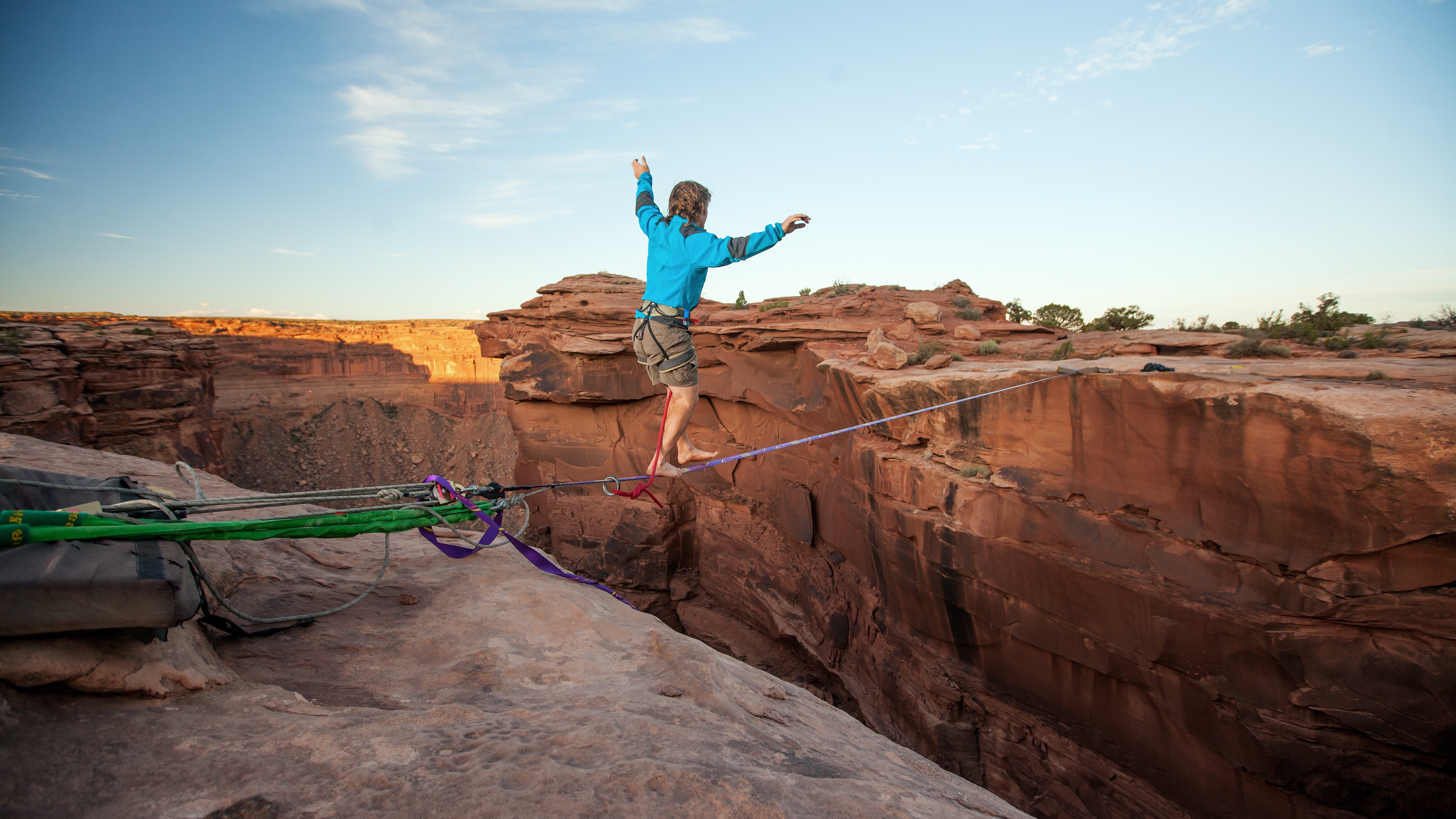
I first discovered slacklining in 2009 when I moved to Colorado and got into the rock climbing scene. Practically any time I was at the crag, or even on a hike, a slackline would be rigged somewhere and gregarious, lithe-bodied folk would be tiptoeing deftly across them. I’d never even heard of slacklining, but since I’d moved west from New York City, that was hardly surprising. As a yoga teacher, I figured I have great balance and I’d be pretty good at it, but I was soon proved wrong. In fact, the first time I tried it, I could barely stand up on the slackline, never mind do anything cool-looking like walk backward.
In just a couple of years, slacklines made their way from the safety of sheltered meadows to deep canyons and I could usually find someone risking their life somewhere around Vail. By about 2015, slacklining had surpassed all the other events at the Vail Mountain Games in popularity, with thousands of people crammed in to watch the breathtaking spectacle of athletes launching dozens of feet into the air to perform mind boggling tricks before landing back on the line. Slacklining has officially gone from being a fringe summer activity beloved by hikers and climbers to a legitimate sport in its own right, and it seems it’s here to stay, so let’s get to know it.
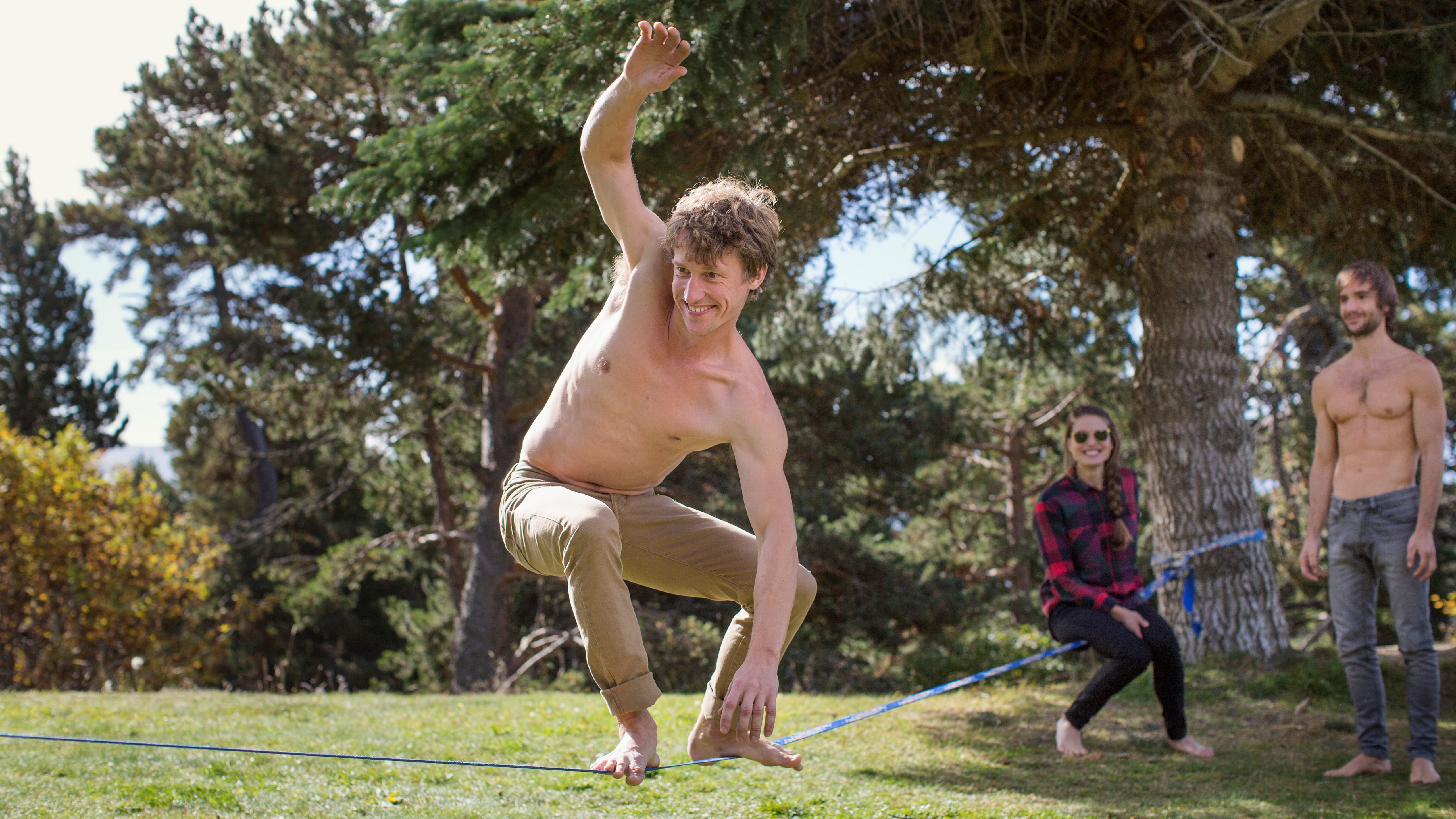
What is slacklining?
Slacklining is a sport that entails balancing on a piece of nylon webbing that's rigged between two points. By balancing, however, we don’t just mean standing still, although you’re welcome to do that. Slackliners might walk, jump, dance, handstand, forward flip, backward flip, you name it, all while attempting to land back on the slackline, which is usually between one and two inches wide. There are now various subtypes of slacklining including classic (balancing and walking), tricklining (acrobatics) and highlining (performed over great heights).
You can rig your slackline between two trees, or using an independent rigging system. In your early days, you might just set it up so it’s a foot above the ground and it’s not far to fall, but you’ll also see slacklines set up in crazy places, like over waterfalls and canyons. If you’re doing acrobatics, the slackline will be set up over crash pads, like in bouldering, whereas if you’re actually over a canyon, you’ll be secured to the line with a climbing harness. Otherwise, there’s no safety equipment.
Think it sounds a lot like tightrope walking? It definitely shares some similarities, but there’s a reason why one is described as tight and the other slack – slacklines don’t have a lot of tension whatsoever, so as soon as you step onto one it’s very bouncy, making it much harder to balance on. This creates a trampoline effect, so experienced slackliners will get a good bounce going to propel them higher into the air where they can perform twists and flips before bouncing on the line again. Slackliners land on the line with practically any part of their body – feet, back, front, bum, even crotch, though I’ve never fancied that myself.
Slacklining is popular among rock climbers and grew out of the Yosemite climbing scene in the 1980’s, when climbers there would set up their webbing and practice balancing on it when they weren’t climbing. Since then, it’s evolved to become an independent sport in its own right – in the summer of 2022, the first ever slacklining world championship took place on the summit of Crap Sogn Gion in Switzerland.
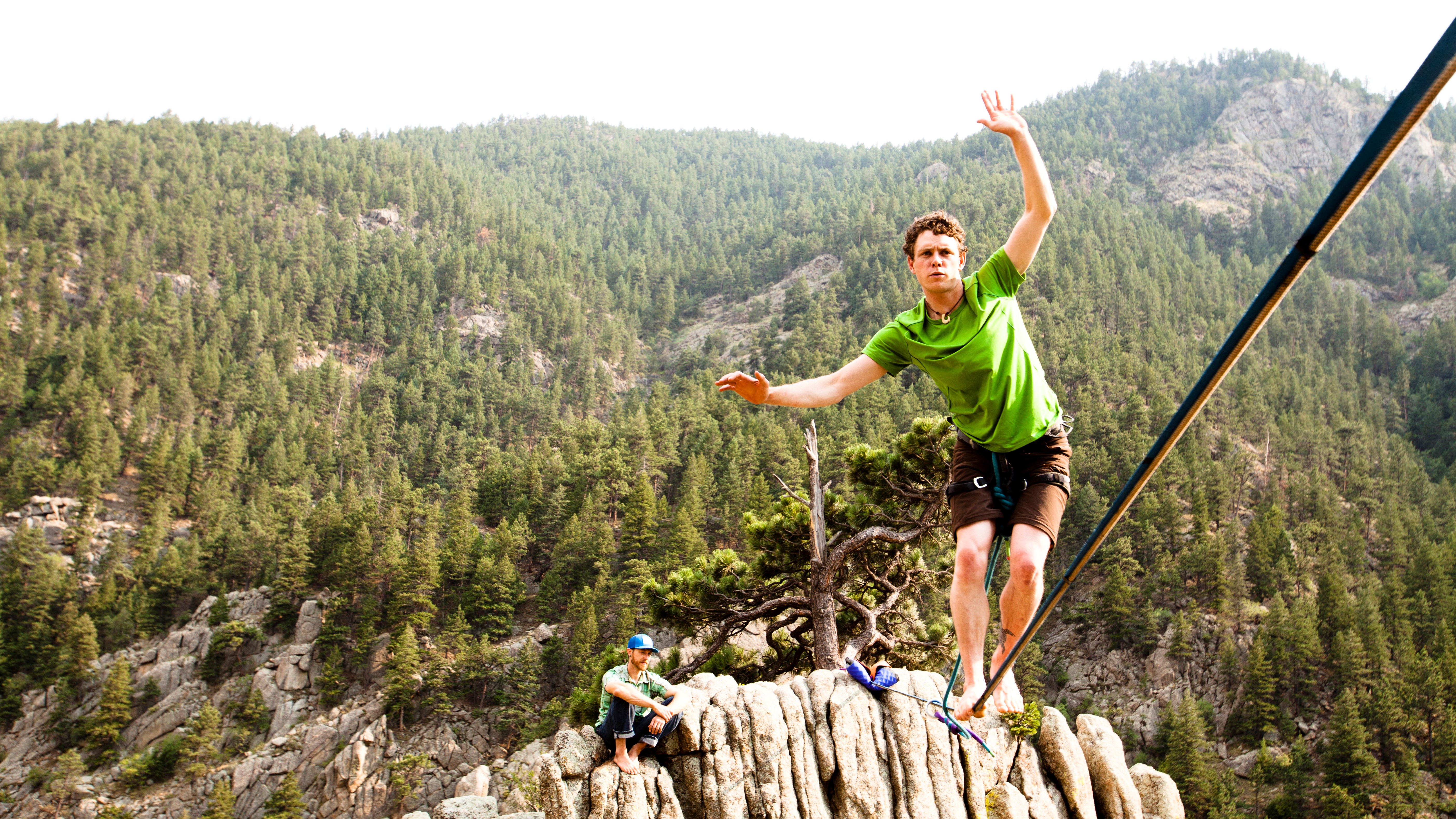
What is the point of slacklining?
If you’ve only ever seen dirtbag climbers hanging out on a low-slung slackline in the summer, it might seem like it’s just something to pass the time between smoking joints, but watch a slacklining competition and you’ll be thoroughly amazed by what you see. Of course, slacklining is a great way to improve your balance as you try to stay on the slackline then work your way up to moving around before jumping up and down and landing on it. More so than just about any other sport, it requires extremely refined skills in coordination, body awareness and problem solving. Olympic gymnasts don’t always make their landings from a backflip and they just need to get their feet on solid ground – imagine aiming it so that you land on two inches of webbing. In fact, many slackliners find the activity quite meditative, as it requires such extreme focus and concentration. Oh, and in case it's not obvious, slacklining is really, really fun.
All the latest inspiration, tips and guides to help you plan your next Advnture!
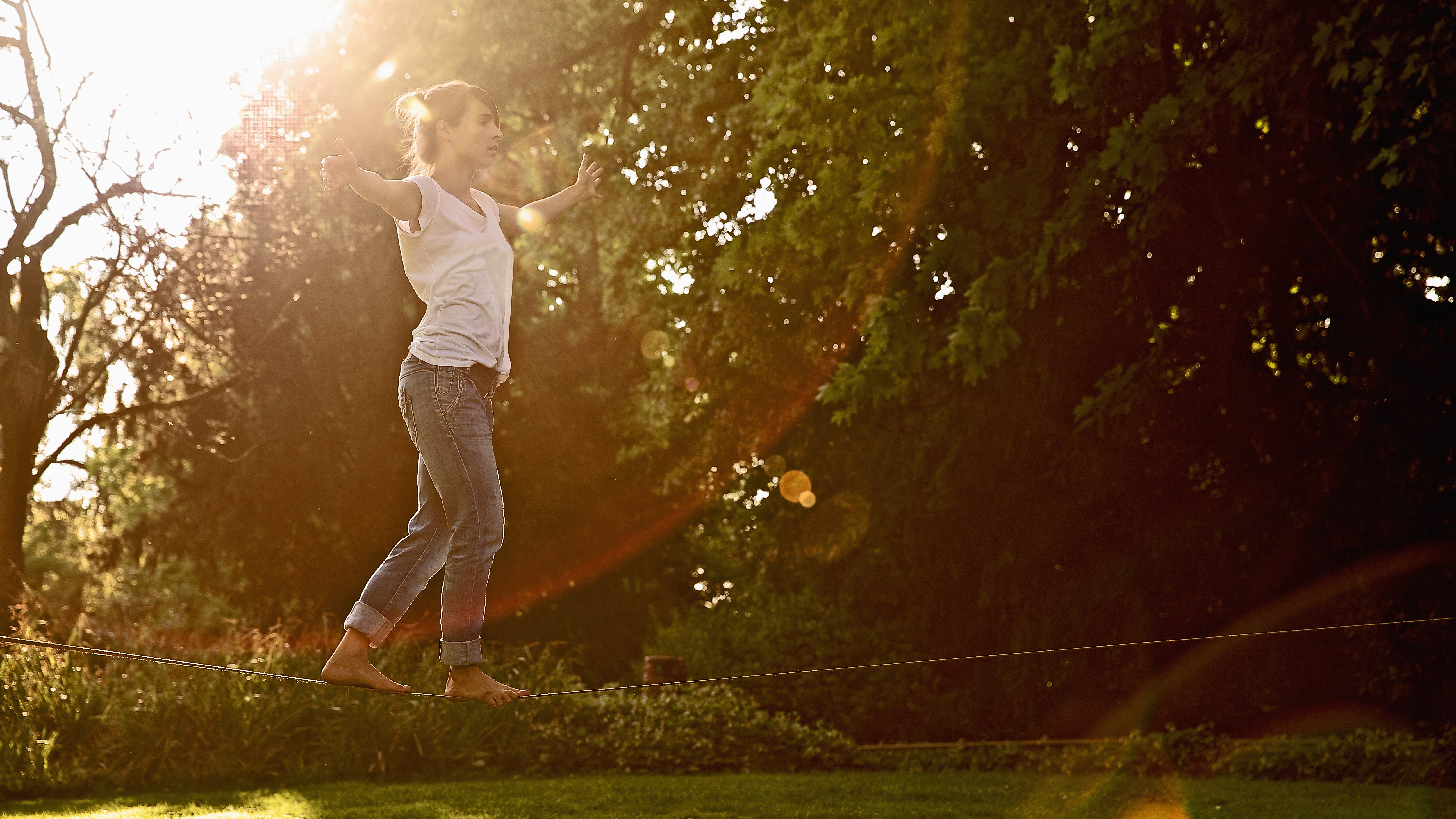
Is slacklining a good workout?
When you’re just starting out and slacklining involves stepping up onto the line, wobbling for two seconds, then stumbling off, it won’t seem like much of a workout at all and that may be why the early pioneers used it on their rest days from climbing. But like a lot of sports, the better you get at it, the more demanding it becomes.
Slacklining is incredibly athletic if you’re performing acrobatics – easily as much as any gymnastics routine. And as you’ll know if you’ve spent any time on a trampoline lately, it also supplies you with an excellent cardiovascular workout.
Of course, you might have absolutely no designs of becoming an acrobat, and if not, is there any point? Definitely, if you want to get better at balance, you can trust that even low-key slacklining will strengthen your leg and core muscles.
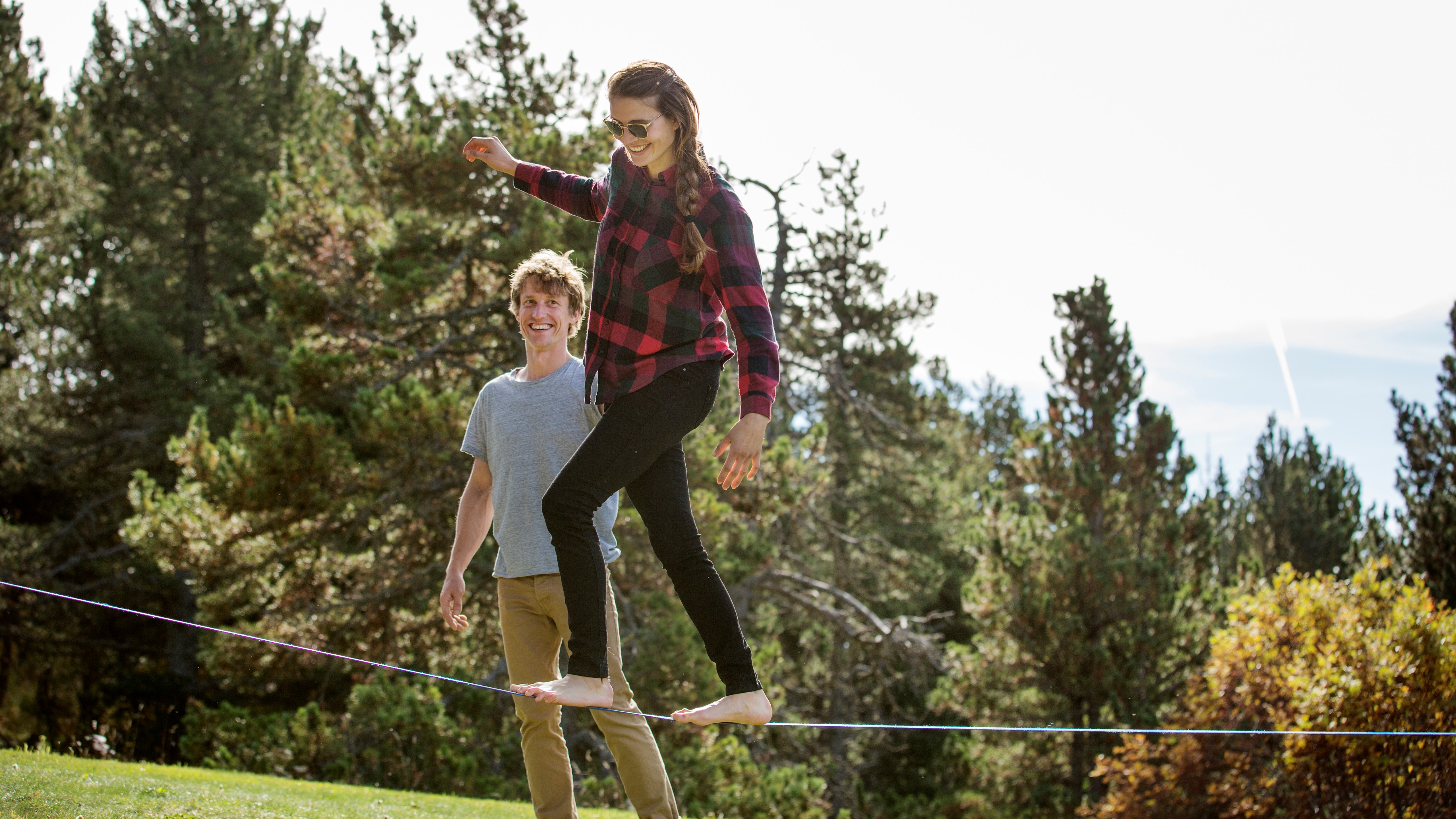
How do you get started slacklining?
If you want to try slacklining, the cheapest way is to find a friend with a rig and hop on theirs. However, if you want to buy your own, know that you can spend anywhere from about $40 to close to $200 on a setup, and it’s best to start with a cheaper one to make sure you like it first.
Once you’ve got yourself a slackline rig, forget about backflips and canyons for now and find yourself a nice open stretch of grass (you can even slackline indoors or on your back deck). Slacklining can definitely be a solo sport, but it’s more fun with friends so grab a few and follow these basic tips for getting started:
- Wear stretchy clothes that you can move in and wear either shorts, short pants or running leggings so your feet don’t get caught up in your trouser legs.
- Most people like to slackline barefoot, while some prefer barefoot running shoes that give good foot sensitivity, but you can even wear flat-soled athletic shoes. Your choice depends a bit on preference and also whether the ground beneath you is soft or sharp and rocky.
- Set up your slackline a foot or two off the ground.
- Make your slackline as taut as it will go for now.
- Stand next to the middle of your slackline and step the closest foot up onto it.
- Keep your back as straight as possible, push straight down into your foot and step up, placing the other foot on the line in front of you.
- Spread your arms out wide for balance and try to keep your head and shoulders centered over your feet – don’t hunch or crouch as that makes it harder to balance.
- Keep your gaze straight ahead and focus your eyes on something that won’t move (not the slackline).
- Try to keep your balance, and step your front foot behind you then in front of you a few times.
- Have fun!
- Rock climbing for beginners: the big questions answered
Julia Clarke is a staff writer for Advnture.com and the author of the book Restorative Yoga for Beginners. She loves to explore mountains on foot, bike, skis and belay and then recover on the the yoga mat. Julia graduated with a degree in journalism in 2004 and spent eight years working as a radio presenter in Kansas City, Vermont, Boston and New York City before discovering the joys of the Rocky Mountains. She then detoured west to Colorado and enjoyed 11 years teaching yoga in Vail before returning to her hometown of Glasgow, Scotland in 2020 to focus on family and writing.

